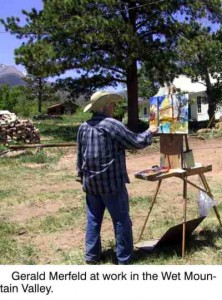Brief by Allen Best
Fire – September 2007 – Colorado Central Magazine
USA Today reports a major influx of new residents in the semi-rural areas of the West, setting the stage for potentially costly and — and deadly — wildfires.
The newspaper analyzed population figures to conclude that roughly 450,000 people have moved into these wildfire-endangered areas since 2000.
This large-lot, low-density exurban development threatens to drive up insurance rates, says the newspaper, and is also partly responsible for the federal government’s cost of battling forest fires, which reached nearly $2 billion last year.
The newspaper also reports that the settlement pattern is prompting Western cities and counties to rethink how and where people should build their homes. It does not, however, offer evidence to support that conclusion.
Tom Harbour, the head of firefighting for the U.S. Forest Service, argues that governments should shift the onus of responsibility. “We need to be telling people with even more clarity that just because you built something here, we’re not going to die for it,” he said.
USA Today also notes an ironic, inverse relationship: the cost of containing fires has forced the government to raid the budgets of programs meant to clear fuels before a fire starts. “There’s something wrong with that,” says Kip Howlett, executive director of the National Association of State Forests. “This is a boat that’s taking on water, and we’re doing everything we can to increase the size of the hole.”
Weather that appears to be part of changing climatic conditions has also made forests more vulnerable.
Forest Magazine notes research by tree-ring experts, called dendrachronologists, that show what they call megadroughts of the past could return. Climate-change scientists also warn of drier conditions possible.

